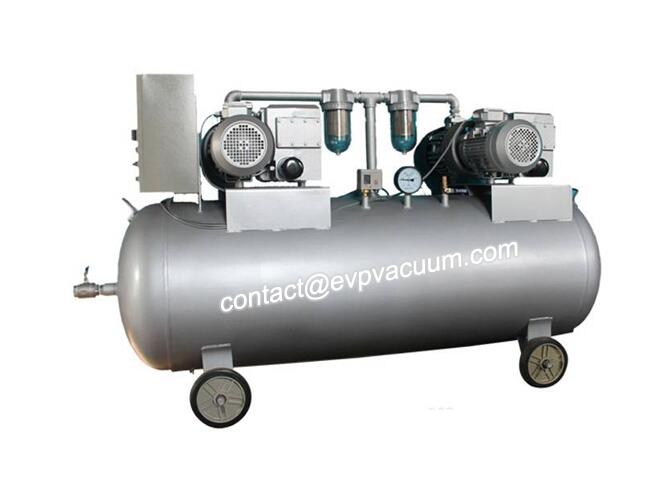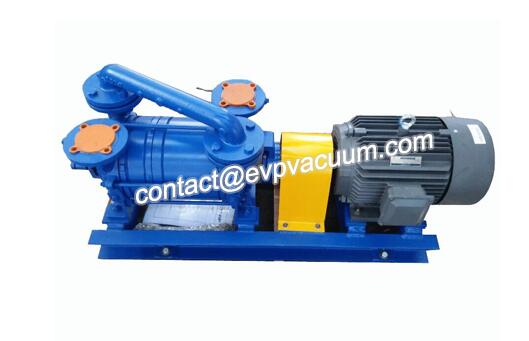Vacuum pump in vacuum drainage system
Vacuum drainage system is a new type of drainage system, suitable for basement and other places with special requirements for installation and sanitation. Although the cost is 20% to 30% higher than the traditional drainage, it has obvious advantages in water saving, environmental protection and operation and maintenance. This paper introduces the application of vacuum pump in vacuum drainage system.
Vacuum drainage system consists of sewage collection well, vacuum contact start-up device, vacuum drainage pipe network, vacuum station, vacuum monitoring system, etc. The system work is controlled by automatic opening and closing of vacuum contact start-up device installed in each sewage collection well. Under the action of vacuum negative pressure, sewage can be upgraded vertically to the main sewage pipe or sewage treatment plant.
Why would vacuum pumps be used in vacuum drainage systems? What’s special about vacuum pumps?
Central vacuum station is one of the vacuum systems. It has the following characteristics:
1. The upper and lower limits of vacuum in vacuum station can be set between 0-0.1 Mpa by vacuum gauge, and the error value is <10%.
2. Gas storage tanks for vacuum stations are manufactured according to user’s requirements, generally between 0.1 and 3 m3. After the start of the vacuum station, the vacuum degree in the vacuum tank always keeps between the set upper and lower limits.
3. The brand vacuum pump is used in the configuration of the vacuum pump, which can be configured according to the gas consumption.
4. Control mode:
A. Single pump automatic and manual control.
B. Double pumps open one spare or double pumps separate single pump timing automatic circulation operation control, or double pumps simultaneous linkage operation automatic control.
5. Each pump in vacuum negative pressure station is equipped with a set of air-filled electromagnetic check valves to prevent vacuum oil return failure.
6. Special industries can design metal or dust filters according to customer requirements to effectively protect vacuum acquisition equipment.

Central Vacuum Station Advantage:
1. Covering the needs of many small vacuum consumers
2. Modular design, customized according to customer’s specific process
3. Simple operation
4. Space-saving system solutions
5. High return on investment and excellent cost performance
6. Energy-saving function
7. Low cost of ownership
8. Reduction of cycling time due to buffer volume (infinite pumping speed effect)
9. A complete one-stop system can be operated at any time.
Vacuum collection tanks are used to ensure vacuum and collect sewage. Wastewater is collected in the lower part of the tank, and the remaining two-thirds are used to ensure vacuum. The vacuum collecting tank is connected with the vacuum tube, and the entrance of the vacuum tube is generally located in the middle of the tank. The negative pressure in the tank is generated by a vacuum pump. When the negative pressure is lower than the lower limit, the vacuum pump opens, and when the negative pressure in the tank reaches the set limit, the vacuum pump stops automatically.
A check valve is installed between the vacuum pump and the vacuum pump. When the vacuum pump stops running, the one-way valve closes automatically to ensure that the gas in the tank does not return. Check valves are also installed on sewage pumps. When the sewage pump stops running, the check valve will automatically close to prevent backflow. A safety valve is also installed on the top of the vacuum collecting tank to prevent the vacuum pump or sewage pump from working and the pressure inside the tank is too high.
The vacuum station should be sealed before use. When the terminal valve closes, the negative pressure of the starting vacuum pump reaches – 70 kpa, and should not exceed 10% after one hour.

vacuum pumps in vacuum drainage systems advantages :
1. Eliminate the pollution of groundwater resources and environment caused by leakage and discharge of gravity transportation, which is conducive to recycling of reclaimed water and promoting environmental protection and ecological progress.
2. No construction of gravity lifting pumping station, no large-scale excavation works, no large-scale pipeline network, a significant reduction in construction materials, a significant reduction in the amount of construction projects, a significant reduction in construction cycle, construction costs, promote the implementation of resource-saving and green construction methods.
3. Avoid blocking spillover of pipeline network, eliminate odor, reduce maintenance expenses of pipeline network operation accidents, and improve the quality of living environment.
4. It is easy to realize the classified transportation and treatment of wastewater, sewage, rainwater and other drainage. The construction cost is low, and the cost of drainage transportation and treatment can be greatly reduced.
(The article comes from the Internet. If reprinting is not allowed, please contact our company to delete it.)
